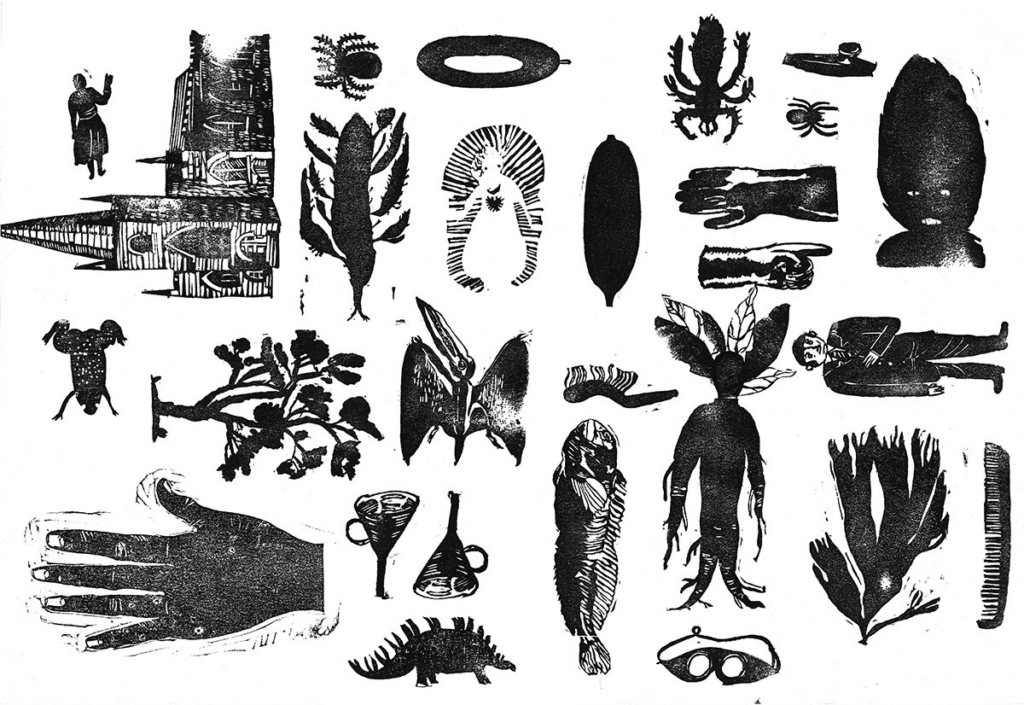Relief printing is a general term for different print making techniques where you carve into the surface of a block and roll the ink on top of it. The ink stays on the surface so the area you carve stays clean. Some examples of relief prints are:
- Woodcut
- Linocut
- Letter press
- Rubber/Metal stamping
Woodcuts
Woodcuts are a subtractive method of creating prints. It’s difficult to know when this method was first created, however we have found crude woodcuts dating back to the 1400’s.
For this type of print, you carve into a block of side-grain wood carving tools. You roll ink onto the surface of the wood, with the ink going on the areas you don’t carve away at, then you press it against paper to print the design onto the paper. You can use your hand to press it against the paper, or other things like a press or your foot. Some people use other things like wooden spoons or a Japanese printing baren. If you evenly press enough pressure on top of the carving to transfer the ink, it doesn’t matter too much what method you use.
Some examples of woodcuts:



Linocuts
Lino cuts are very similar to wood cuts since they use the same subtractive method of creating a print. This was a method created much later in the 1860’s. The main difference is the supplies used as well as the difficulty of carving since it’s easier to carve a sheet of linoleum. However, since it’s easier to carve it’s also easier to break it.
To create a linocut, you need to get a sheet of linoleum and a steel gauge carving tool. Then, using the tools, carve your design into the sheet of linoleum (can be shortened to lino). You can draw your design onto the lino since it won’t affect the ink, you’ll put it on top of the lino after you carve it.
Once you carve it out, you roll out some ink onto the top of the surface and press it on top of a piece of paper. Just like the woodcut, there’s many ways to press the lino onto the paper. Once its transferred, peel the paper away and put it on a drying rack to dry.
Some examples of lino prints:



Letter Press
Letter Press is most used to print black text, but you can use any colour ink with this method. It’s a method where the image or letters are on a raised surface, like a rubber stamp and pressed against a surface to transfer the ink and design over. Despite popular belief, this way of printing was invented in 1041. It was first invented in China, then in Germany 4 centuries later. Just like the first 2 methods, you roll the ink on top of the letters and press them against a piece of paper, or whatever you’re printing the design onto to transfer it.



Rubber Stamping
Rubber stamping is a method of printing that dates back to 100 AD, while It’s unlikely they used rubber like we do now, they still carved out blocks to stamp designs onto things. For this type of relief printing, you need to draw your design out onto the rubber stamp and carve it out with your tool of choice. Then, just like the above techniques, roll ink onto the design and press it against paper or whatever surface you want your design onto.


